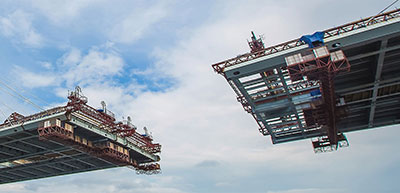The Lingering Effects of COVID in Construction
 Even though vaccinations against COVID are rising, the construction industry is still feeling the aftershocks of the pandemic. Supply chains continue to be disrupted nationwide. Many manufacturers and suppliers had to curtail or even stop production, but construction activity continued throughout the pandemic. That caused depletion of inventory and instances where demand exceeds supply. Clients are now reporting long lead times for materials that are usually readily available. When materials are available, they are often much more expensive than usual.
Even though vaccinations against COVID are rising, the construction industry is still feeling the aftershocks of the pandemic. Supply chains continue to be disrupted nationwide. Many manufacturers and suppliers had to curtail or even stop production, but construction activity continued throughout the pandemic. That caused depletion of inventory and instances where demand exceeds supply. Clients are now reporting long lead times for materials that are usually readily available. When materials are available, they are often much more expensive than usual.
This causes problems at all levels of construction and exacerbates the tensions that already exist in the industry. Owners do not make money during construction; they make money from completed projects that they can use, rent, or sell. Owners want their projects completed as quickly and as inexpensively as possible. Contractors and subcontractors do make money during construction, but, like retailers, they make money by maximizing the difference between their cost for labor and materials and the price they charge. Price escalation in materials cuts into margins. And having workers sitting idle on a jobsite waiting for materials is the antithesis of labor productivity.
The contracts between the owner, the contractor, the subcontractors, and the suppliers all determine who will ultimately bear the cost of a problem on a construction contract. Here are a few things to consider if you are negotiating a new contract or are trying to resolve a problem on an existing project that has been impacted by supply chain issues:
- What is the form of your contract? Is it fixed-price or cost-plus?
- Does the contract impose deadlines?
- Under what circumstances can those deadlines be changed?
- What are the penalties if deadlines are missed? Liquidated damages or actual damages?
- Is there a no damages for delay clause?
- Is there a limitation on consequential damages?
- Is there a cost escalation provision?
- Is there a force majeure clause and does it apply?
This list is by no means exhaustive, but it shows that several different provisions in a single contract have to play together to achieve the desired allocation of risk between the parties to the contract.
But the problem often is even more complex than that. The contractual risk allocations need to be consistent for all of the contracts affecting a party on a project. For example, a general contractor on a construction project will typically have a contract with the owner and separate contracts with one or more subcontractors and suppliers. If the contract with the owner is fixed price and does not allow for cost escalation adjustments, the general contractor bears the risk of future price spikes in labor and materials. The general contractor can mitigate that risk by having fixed price contracts with its subcontractors and suppliers. That transfers the risk of price escalation further down the contractual chain. But if the general contractor has variable or market-price contracts with its subcontractors and suppliers, then the general contractor is stuck. The general contractor has to pay more than planned to get the materials it needs, but it cannot pass that cost on to the owner.
Coordinating multiple contract provisions across many contracts during contract negotiations is hard. Navigating conflicting contract provisions after a problem arises on a problem is often even more difficult. Owners, contractors, and subcontractors should consult with a knowledgeable construction attorney early to position themselves as best they can in these turbulent times.
